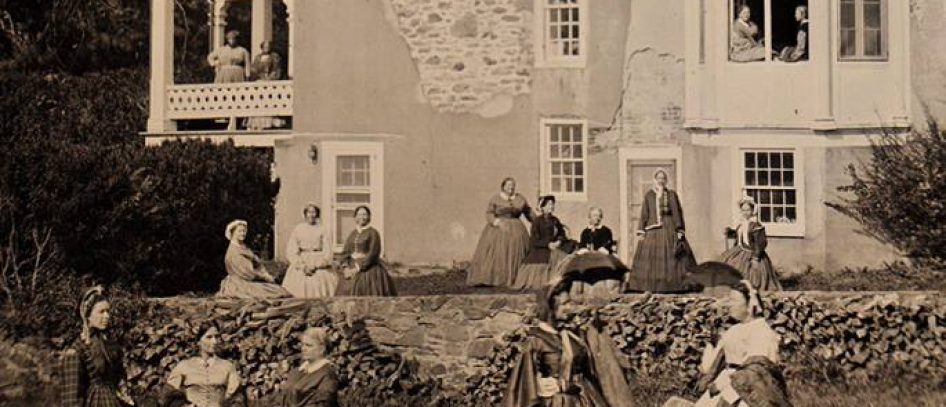Pattern
Many more patterns are available now since Vicki Betts compiled these suggestions. Use a pattern that bests matches the attributes you want in your dress based on the research information presented on other pages of this website.
Fabric
Commercially produced fabric that perfectly matches Civil War era homespun dresses has yet to be found. Be prepared to make compromises in one or more characteristics of your fabric.
Width – Most homespuns used full widths of fabric, selvedge to selvedge in the skirts, with the width being mostly between 25” and 30”. Modern factory cloth comes in wider widths, so one must decide to either use the wider panels and take advantage of the selvedges or cut the fabric and lose the selvedge. In the case of the cut panel, you will want to overcast the edges
Content – The lower South used either cotton or wool or a combination of those two fibers. The upper South probably also used some linen, although it is not mentioned often in wartime sources. The threads would have been of different fibers, not threads of blended fibers. In choosing fabric, keep in mind where and when the dress is most likely to be worn.
Texture – The best texture of a modern factory dress fabric is a linen/cotton blend. There is just enough irregularity in the fibers to make it look homespun, plus the threads are thicker and the weight is heavier. It “roughens up” well with washing and drying. However, this would not be a period fabric combination, especially with the threads being actually blended.
Weight – The fabrics normally found in quilt stores labeled “homespun” are too light weight to accurately simulate homespun. The threads are too fine. Think soft, well washed canvas or duck. Look for either a cotton/linen blend or for home décor fabrics to get the right weight.
Color – Look over the Southern Dye tables in the main Homespun page and keep in mind location. Don’t choose a butternut colored dye if you are in Texas, where butternuts do not grow, nor would cochineal beetles be appropriate for Virginia. Consider if imported dyes or imported mordents were available. Natural colors, such as off-white cotton, or off-white/gray/black wool are always good components of a plaid or stripe. As some sources mention, cannibalizing of older pieces of fabric for a highlight line of a color not normally available in your neighborhood may occur.
Scale – Another problem is that often our heavier weight plaids from the upholstery department have patterns that are too large. Look for a repeat of no more than 1.5” and ideally less than an inch. A larger repeat generally means more wasted fabric while matching.
Linings and Pockets – Feel free to use scrap fabrics for linings and pockets, including off-white or other homespuns, or fabrics salvaged from older garments now faded. Note that there is a wide variety of full/partial/no bodice linings on the originals.
Closures
Buttons – Buttons may vary since they are easily salvaged from older garments. Several of the originals use simple small four-hole white china buttons available from antique stores and various venders. Sew all four hole buttons on with an “X”. The use of persimmon seed, gourd or other homemade buttons can also be found in period written sources.
Hooks and eyes – Some of the dresses only had hooks and eyes, but these look different from modern hooks and eyes.
